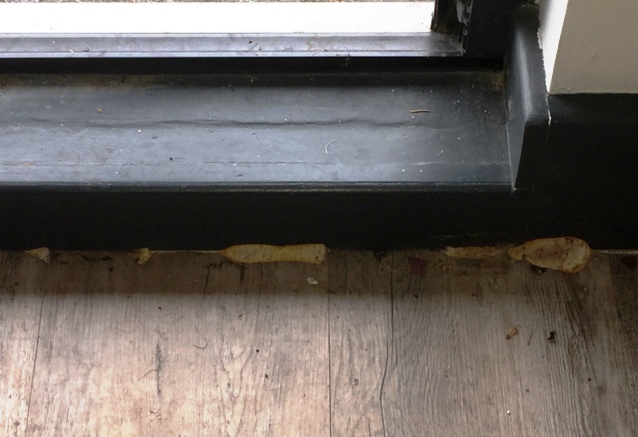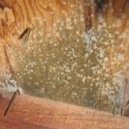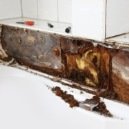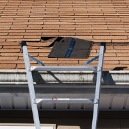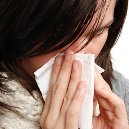Find a pre-screened local mold removal specialist Free Estimate
Find a Mold Specialist Now
Click or Call, Toll-Free 24/7
Basidiospores in the Home
Basidiospores in the home or business are a cluster of spores that may be indicative of a greater mold problem. These spores originate from a type of fungi called basidiomycetes, which includes mushrooms, toadstools, boletes, wood bracket fungi, and puffballs. These spores can be colorless, black, brown or yellow. Although various forms of this type of mold are consistently present in nature, the species and its concentration level is what ultimately determines the toxicity of the air we breathe in. When the presence of this type of fungi is detected, it is not necessary to be immediately alarmed, although it is important to be aware of how they are spreading into the home and in what quantity.
Maintaining healthy air quality is incredibly important in the prevention of potentially dangerous respiratory illnesses, which is why indoor and outdoor air pollution is such an important topic of research for the CDC (Center for Disease Control), WHO (World Health Organization) and similar agencies. In fact, they’ve devoted a number of resources towards containing fungal outbreaks that can occur from the countless number of species of fungi and mold that exist. Owning an air purifier can be a helpful way to reduce the number of mold spores present in your home’s air.
How do Basidiospores Spread Into Homes?
Wind
The trouble with basidiospores in particular is that they may be found just about everywhere. The spores are ejected from the mushrooms and other fungi in which they originate, and then may attach themselves to nearby plants, animals or other organics. Typically, they travel by wind currents and there are several different ways in which the fungi may find their way into areas of your home.
They can also remain in air currents for long periods of time, maintaining their viability, and can end up traveling thousands of miles away from their point of origin. A single spore has been known to cross several states under the right conditions, before finding its way into your home. Not only is it astonishing how much of a distance these fungi can travel, but also equally surprising, is just how high of an altitude they can reach. Spores from the fungi have been documented to reach tens of thousands of feet in height and attach themselves to balloons and even aircraft.
Insects/Animals
Another way that the basidiospores are dispersed is by “hitch hiking”, attaching themselves to the insects and animals in which they may come into contact with. Dogs, cats and other furry pets that are let out for periods of time, may potentially bring the spores into the home, without the pet owners realizing it. Common insects such as ants or flies are potential carriers as well. Once inside, and coming into contact with an adequate moisture source, the spores may begin growing in places like potted plants, in bathrooms, on carpeting and textiles, on drywall and on anything made of wood. This makes just about every home a suitable habitat for the spores to dwell in.
Water
Water is another vehicle of transportation for basidiospores. If your home recently had flooding, or had a leak in the roof, it is possible that the water that entered contained mold spores. As a matter of fact, many different types of mold spores can be transported by water.
Risk Factors of Basidiospores
As with all mold, the concentration levels of the spores in the air determine the health effects that come from the inhalation of basidiospores. A minimal presence may not pose much of a health risk or even be detected at all. However, spores that grow into large colonies can be dangerous and in some cases, deadly. The possible ailments from basidiospores range from a number of mild to severe symptoms, including:
- Pneumonia-like symptoms
- Cryptococcal meningitis (an infection of the lining of the spinal cord and brain)
- Asthma
- Eczema (skin lesions that are red, itchy or may become scaly or crusty)
- Allergic Alveolitis (an inflammation of the alveoli within the lungs caused by hypersensitivity to inhaled organic dusts)
- Fatigue
- Headaches
- Depression
- Nasal Stuffiness
- Sneezing
- Congestion
- Plugged Ears
- Watery Eyes
- Itchy Skin
- Throat Irritation
- Rash
- Hives
Mold Removal
Locating the source of mold in the home is the critical factor in preventing further mold infestations. As most people are already aware, homes and buildings that have been water damaged are prone to mold growth. This is especially the case in environments that undergo regular bouts of rain, snow or humidity. The most obvious places to check for mold include under sinks, behind toilets, in basements and attics, and under and around appliances that use water, like hot water heaters, dishwashers and washing machines. Moist, rotting wood or discolored vinyl tile, or the presence of a musty odor, could be an indication that mold may be present and needs to be taken care of.
Often times, mold can be detected by the odor it gives off before it can be seen. Many times though, the mold cannot be easily located. It may be inside walls, under carpets or other types of flooring, in the attic, or in a crawl space or basement.
Young children, the elderly, pregnant women, individuals with compromised immune systems, or patients undergoing chemotherapy treatments are most at risk for health complications related to mold exposure. If for any reason you suspect that there may be mold in your home, you should contact and schedule a free home inspection by a professional mold remediation company. They will come to your home, inspect the inside and outside, and if they find mold, let you know what needs to be done to safely contain it and remove it. Having an expert trained in the detection and prevention of mold, fungi, and all other allergens come to your home is an invaluable service, especially for those who suffer from asthma and similar respiratory ailments. Even if you are thinking of removing the mold yourself, it never hurts to get a professional’s assessment of the situation.
Free Home Inspection By A Mold Removal Specialist
Search This Website
 Mushrooms growing outdoors
Mushrooms growing outdoorsRecent Articles
-
See Our 5 Recommended Mold Removal Companies in Wheaton, IL
Jun 20, 24 10:33 AM
-
See Our 5 Recommended Mold Removal Companies in Aberdeen, SD
Oct 08, 21 04:05 PM
-
Public Housing Tenant Sick from Mold
Apr 24, 20 01:40 PM
